
Hieronymus Bosch was a Dutch painter from Brabant. He is one of the most notable representatives of the Early Netherlandish painting school. His work, generally oil on oak wood, mainly contains fantastic illustrations of religious concepts and narratives. Within his lifetime, his work was collected in the Netherlands, Austria, and Spain, and widely copied, especially his macabre and nightmarish depictions of hell.

Henry Valentine Miller was an American novelist, short story writer and essayist. He broke with existing literary forms and developed a new type of semi-autobiographical novel that blended character study, social criticism, philosophical reflection, stream of consciousness, explicit language, sex, surrealist free association, and mysticism. His most characteristic works of this kind are Tropic of Cancer, Black Spring, Tropic of Capricorn, and the trilogy The Rosy Crucifixion, which are based on his experiences in New York City and Paris. He also wrote travel memoirs and literary criticism, and painted watercolors.
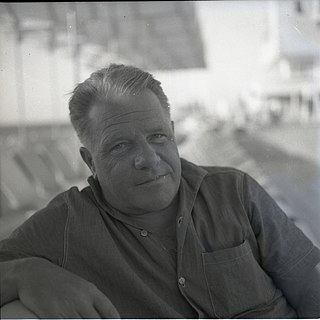
Lawrence George Durrell was an expatriate British novelist, poet, dramatist, and travel writer. He was the eldest brother of naturalist and writer Gerald Durrell.

For other uses, seeTropic of Cancer (disambiguation).
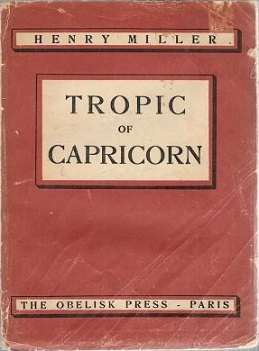
Tropic of Capricorn is a semi-autobiographical novel by Henry Miller, first published by Obelisk Press in Paris in 1939. A prequel of sorts to Miller's first published novel, 1934's Tropic of Cancer, it was banned in the United States until a 1961 Justice Department ruling declared that its contents were not obscene.

The Garden of Earthly Delights is the modern title given to a triptych oil painting on oak panel painted by the Early Netherlandish master Hieronymus Bosch, between 1490 and 1510, when Bosch was between 40 and 60 years old. It has been housed in the Museo del Prado in Madrid, Spain since 1939.
Alfred Perlès (1897–1990) was an Austrian writer, who was most famous for his associations with Henry Miller, Lawrence Durrell, and Anaïs Nin.
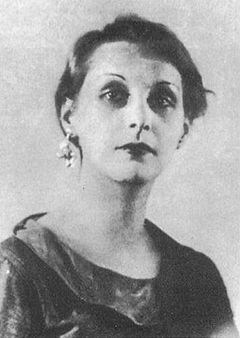
June Miller was the second wife of novelist Henry Miller. He wrote prolifically about her and their relationship in his books, usually using the pseudonyms Mona or Mara interchangeably. She also appears prominently in the early diaries of Anaïs Nin.
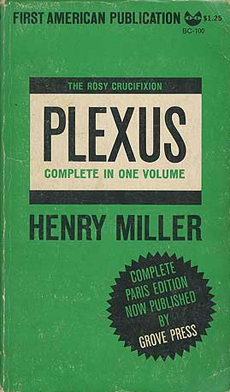
The Rosy Crucifixion, a trilogy consisting of Sexus, Plexus, and Nexus, is a fictionalized account documenting the six-year period of Henry Miller's life in Brooklyn as he falls for his second wife June and struggles to become a writer, leading up to his initial departure for Paris in 1928. The title comes from a sentence near the end of Miller's Tropic of Capricorn: "All my Calvaries were rosy crucifixions, pseudo-tragedies to keep the fires of hell burning brightly for the real sinners who are in danger of being forgotten."

Black Spring is a book of ten short stories by the American writer Henry Miller, published in 1936 by the Obelisk Press in Paris, France. Black Spring was Miller's second published book, following Tropic of Cancer and preceding Tropic of Capricorn. The book was written in 1932-33 while Miller was living in Clichy, Hauts-de-Seine, a northwestern suburb of Paris. Like Tropic of Cancer, the book is dedicated to Anaïs Nin.
Death and the Miser is a Northern Renaissance painting produced between 1490 and 1516 by the Dutch artist Hieronymus Bosch. The piece was originally part of a triptych, but the center piece is missing. It is a memento mori painting, which is meant to remind the viewer of the inevitability of death and the futility of the pursuit of material wealth, illustrating the sin of greed.
Mary Dearborn is an American biographer and author. Dearborn has published biographies of Norman Mailer, Henry Miller, Peggy Guggenheim and others.
Charles Haldeman was an American novelist.

Anderson Canyon in the Big Sur region of California was named after pioneering homesteaders James and Peter Andersen who were the first European settlers of the area. The canyon, Anderson Creek, and Anderson Peak are south of McWay Falls and within the boundaries of Julia Pfeiffer Burns State Park.
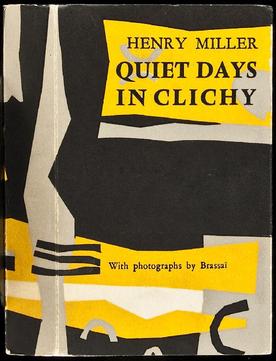
Quiet Days in Clichy is a novella written by Henry Miller. It is based on his experience as a Parisian expatriate in the early 1930s, when he and Alfred Perlès shared a small apartment in suburban Clichy as struggling writers. It takes place around the time Miller was writing Black Spring. According to his photographer friend George Brassaï, Miller admitted the title is “completely misleading.”

Moloch: or, This Gentile World is a semi-autobiographical novel written by Henry Miller in 1927-28, initially under the guise of a novel written by his wife, June. The book went unpublished until 1992, 65 years after it was written and 12 years after Miller's death. It is widely considered to be of interest more as a study of Miller's artistic growth than as a worthy piece of fiction.
The following is a bibliography of Henry Miller by category.

The Henry Miller Memorial Library is a nonprofit arts center, bookstore, and performance venue in Big Sur, California, documenting the life of the late writer, artist, and Henry Miller. Emil White built the house for Miller in the mid-1960s. After Miller died in 1980, White dedicated the property as a memorial to Miller and as a gallery where local artists could show their work. In 1981, with the help of the Big Sur Land Trust, White formally organized "The Henry Miller Memorial Library". White was director of the institution until he died in 1989. The Big Sur Land Trust managed the library until October 1998, when the non-profit The Henry Miller Memorial Library Inc. was created to sustain the library.

The Air-Conditioned Nightmare is a memoir written by Henry Miller, first published in 1945, about his year-long road trip across the United States in 1940, following his return from nearly a decade living in Paris.
Walker Winslow was an American poet and novelist, one of whose books — an autobiographical work describing his experiences in psychiatric hospitals, both as a patient and as a ward attendant — was published under the pseudonym Harold Maine. Winslow was something of a larger than life character: "Walker's forte was people" wrote Henry Miller in his 1957 book Big Sur and the Oranges of Hieronymus Bosch. Miller also described is friend's writing talent:
The man who could write like a breeze was Walker Winslow. Walker had written several books, under various names, before coming to Big Sur. He had also written heaps of poems. But it was not until he began his autobiographical novel, If a Man Be Mad, that he found his true vein.












